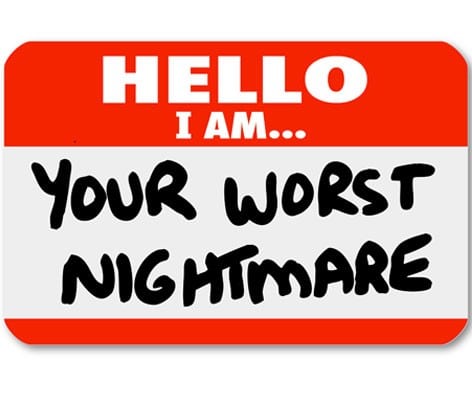Halloween is upon us, a day when both children and adults get into the spirit with elaborate costumes, haunted houses and horror movie marathons. Some celebrate with anything pumpkin spiced, while others take this ghoulish time to channel their inner monster. The season of scary draws on our love of fear. But for those in the communications industry, it is not the zombies, witches or Freddy Kreuger films that keep us up at night. No, the nightmares we fear are much more frightening; the PR nightmares.
Some PR nightmares are much scarier than others. Like the endless choices of costumes we wear, they take on many different shapes and forms. From demon to ghost to werewolf, the PR nightmare can be a social media slip, a negative online review or a politically incorrect statement by the CEO. These are the things that can destroy a company and leave a PR professional out of a job.
Sometimes it’s an honest mistake. Let’s take Heineken for example. Last year, the brewery wanted to highlight the historic benefactor of a Heineken-owned cider company. When the company turned up blank with an actual photo of Reverend Charles H. Bulmer, they turned to a photo bank of another Victorian-era mustached gentleman because who will know the difference, right?
Wrong. The photo turned out to be Hugh Price Hughes, a Methodist who devoted his life to helping alcoholics. Not the best face for an advertisement by a beer company. Heineken has since apologized, after a complaint to the Advertising Standards Authority by the very church that Hughes founded (who Heineken also individually apologized to, and made a generous donation to).
Other times it’s social media that destroys your career in 140 characters or less. For US Airways, it was a Twitter picture that was worth way more than the character limit. In April the company replied to a disgruntled passenger with an extremely NSFW (not safe for work) photo that circulated online for over an hour before it was taken down. US Airways announced an apology along with a surprising statement that the employee responsible for posting the Twitpic would not be fired.
Though these nightmares are enough to make anyone cringe, there are a number of different ways to manage them:
1. Prepare
You can never be too prepared when it comes to crisis management. Any company, big or small, established or startup, can fall victim to scandal. The most important tool for managing crises is a set communication plan to control and respond to the crisis with confidence. The Ready Campaign has helpful tips for creating a crisis communication plan.
2. Communicate
Take control of the situation right away and respond by reporting accurate information to the public, while correcting any incorrect information floating around. Communicating also involves listening. Asses the pulse of the public’s conversation and leverage responses accordingly.
3. Be honest
The worst thing you could possibly do is lie or bury the issue. It will get out and it will come back to bite you. People can be harsh but when you own up to your mistakes upfront, they can be a lot more understanding.
4. Stay humble
At the end of the day, all you can do is learn from your mistakes. Don’t overreact or make a big deal of the slip. Obviously this will depend on the severity of the error, but the best brand recoveries come from genuine attempts to reconcile. Your disaster will not disappear after one apology tweet, and salvaging your brand’s reputation will take more than a press release. Be attentive to your audience and communicate with them regularly.
From all of us at RBOA, have a Happy Halloween!


